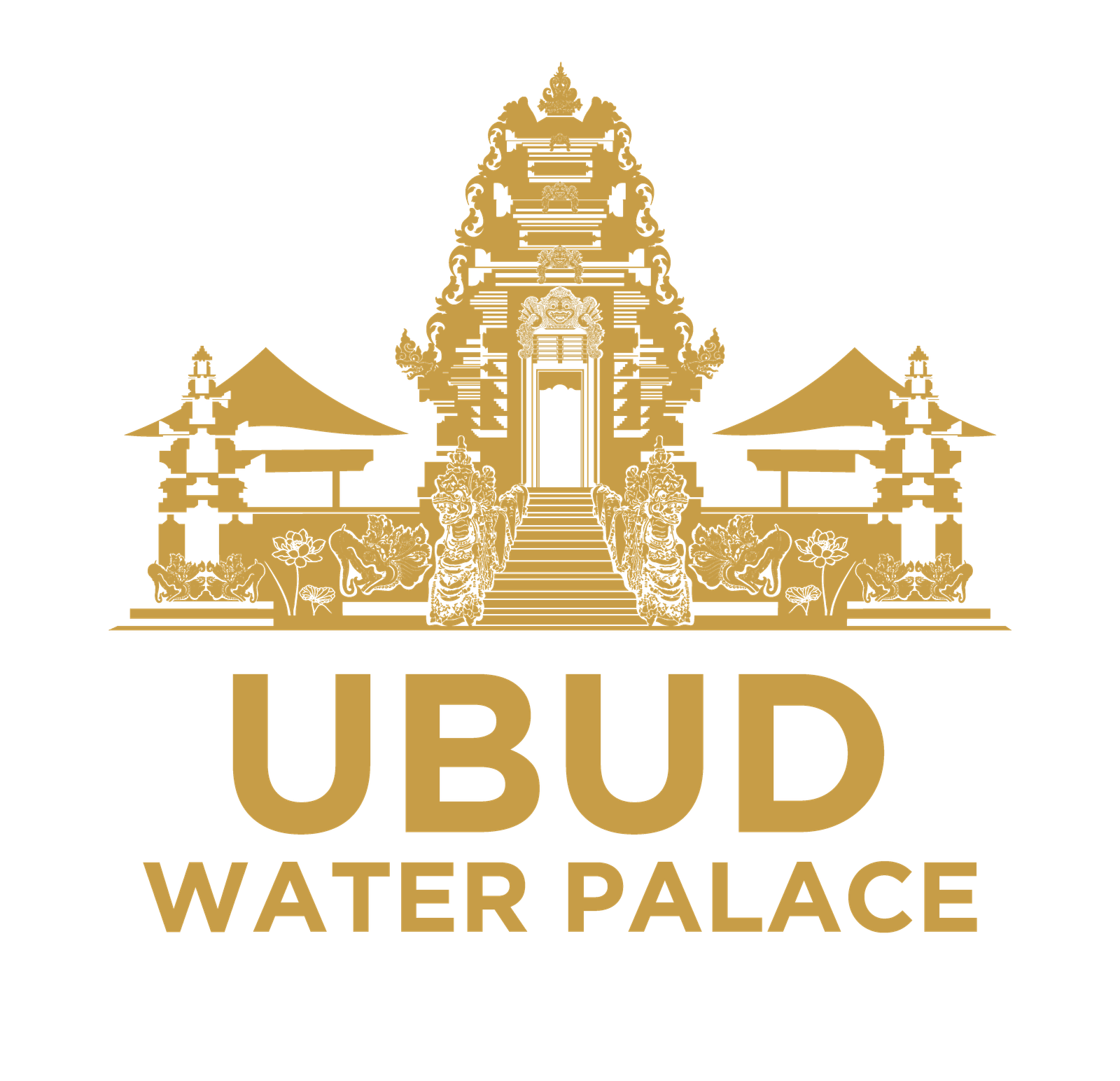Architectures
Jaba Sisi Area
Nista Mandala, the outermost sanctuary of the temple, serves as the precursor to the spiritual journey within. This space is dedicated to the meticulous preparations for Yajña, where the crafting of 'Penjor' and 'Lapan' takes place amidst the hum of conversations. Amidst the serenity of Nista Mandala, structures like Bale Kulkul and Wantilan stand as silent witnesses to the sacred rituals. In its simplicity, a temple is comprised of Jaba (the outer courtyard) and Jeroan (the inner courtyard), encircled by the protective embrace of "Penyengker" walls.
The Ubud Water Palace, a cherished tourist destination, is an integral part of the outer realm of Pura Taman Kemuda Saraswati, often referred to as Jaba Sisi Temple. Here, visitors are welcomed to explore the outer precinct, unveiling an array of mesmerizing historical relics. From intricately carved statues to majestic gates and buildings adorned with Balinese artistry, each element narrates a captivating story of the region's rich cultural heritage.While the outer sanctuary invites exploration, it's crucial to note the sanctity of the inner precinct. The inner area of Pura Taman Kemuda Saraswati is revered as a sacred space, and out of respect, visitors are kindly requested to refrain from entering this hallowed realm.

Kori Agung
After crossing the bridge in the middle of the lotus pond, you will see three Kori Agung, which are the main entrance to enter Pura Taman Kemuda Saraswati.
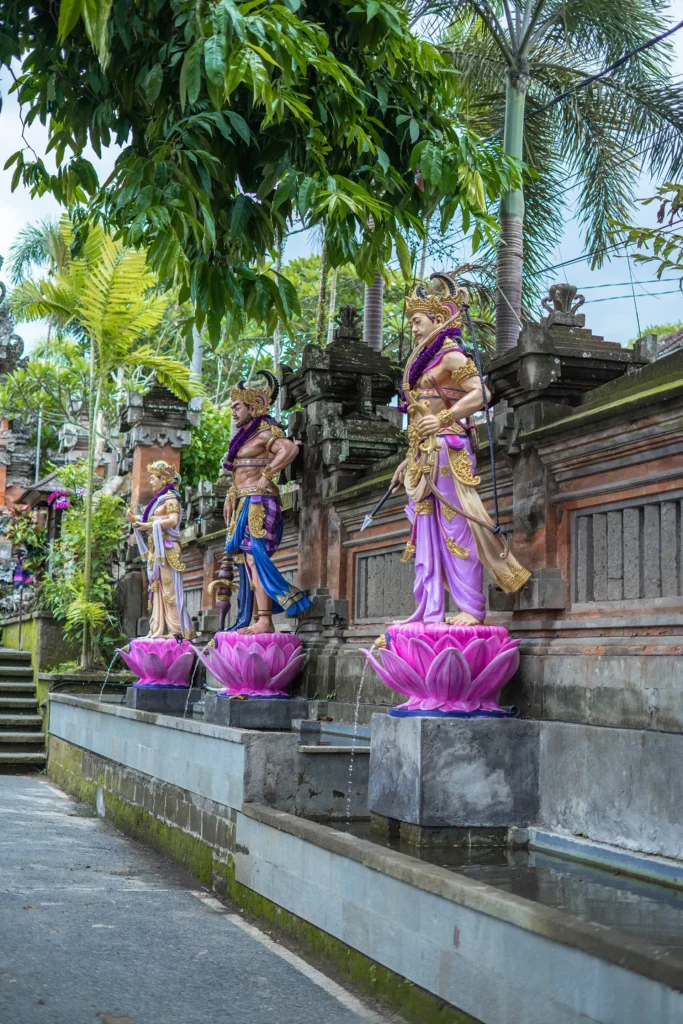
Panca Pandawa Statue
“Pandawa,” is a central theme in the epic Mahabharata. This ancient narrative weaves a story of courage, righteousness, the eternal struggle between good and evil.
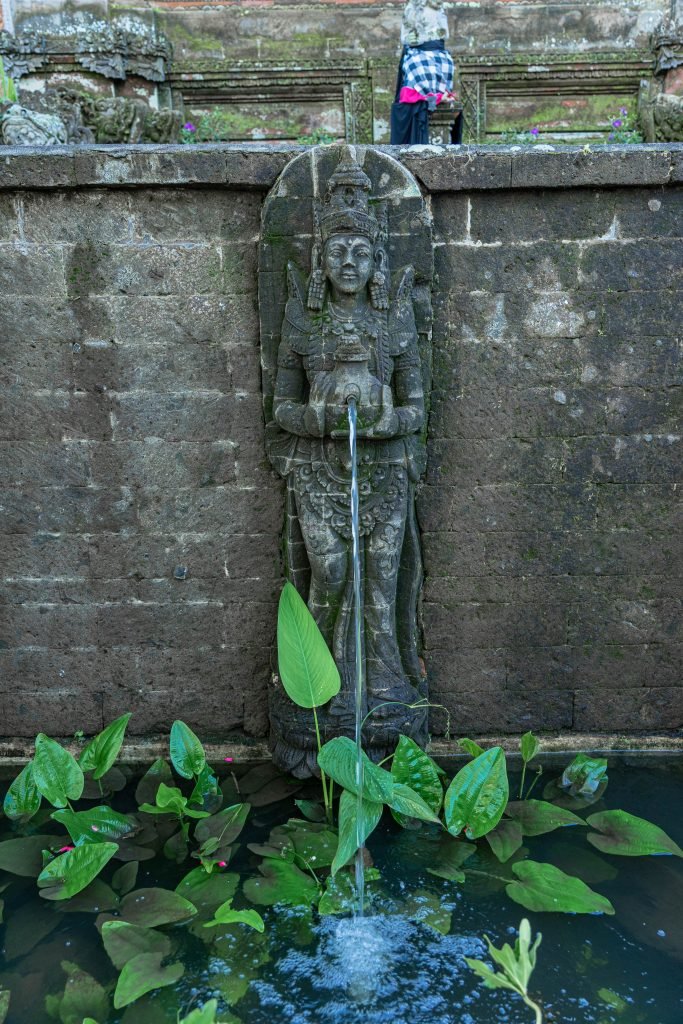
Fountains
After entering and passing through the ‘Bale Patok’ building, you can see the beauty of Pura Taman Kemuda Saraswati, where in the middle of the lake there is a bridge which is the road leading into the temple.
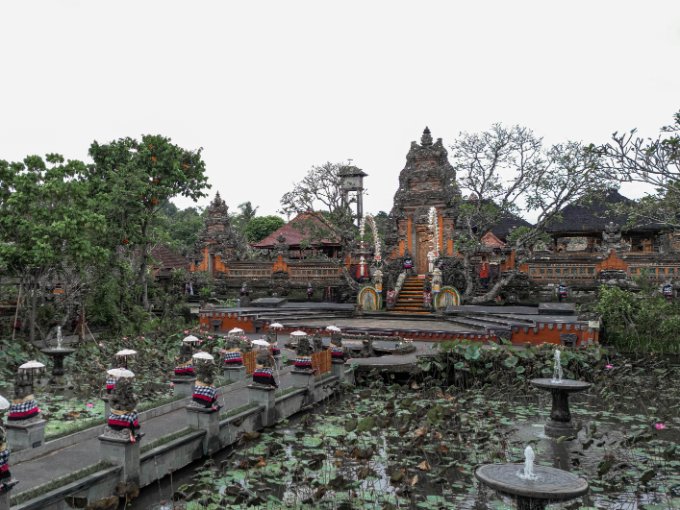
Bajra Lepa
According to a description in Geguritan Rajendra Prasad, it is stated that “In the middle of the pond, there is another fountain, on the edge of the rocks, there is a ‘Bajra Lepa’ attached
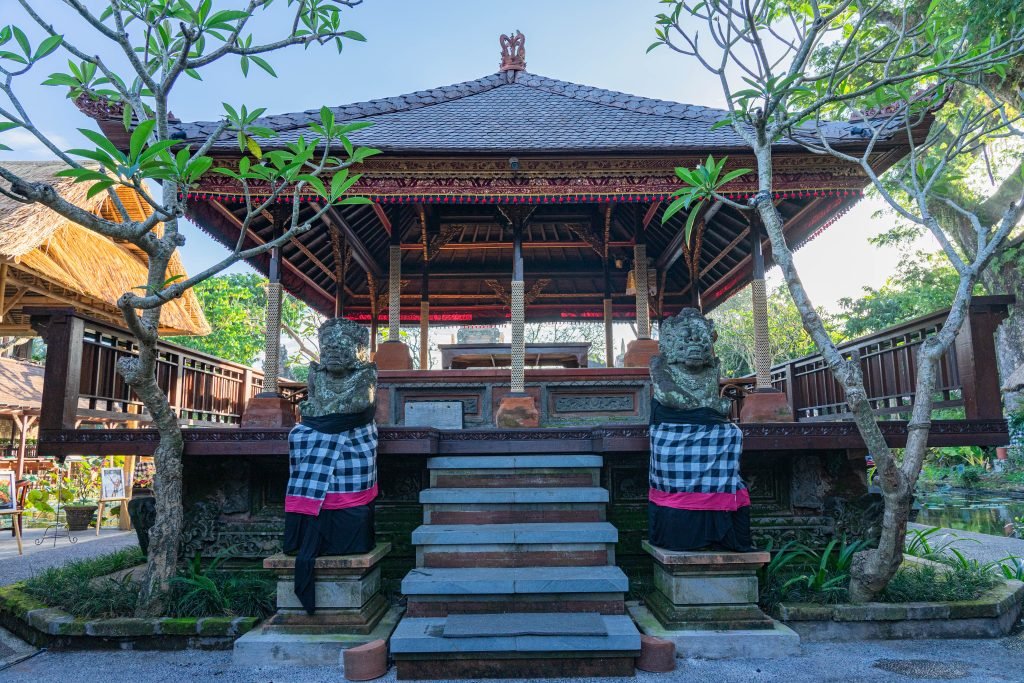
Bale Patok
After entering the ‘Candi Bentar’ area, you will see a ‘Bale Patok’ where this ‘Bale Patok’ in Rajendra Prasad’s literature is also mentioned as a building (bale) that is used as a place to solace.

Candi Bentar
Candi Bentar is the gate at the place of worship for Hindus (temples) which at the top is split in two. Candi Bentar has been known since the time of the Majapahit Kingdom, with its towering shape that depicts a mountain.
Pura Taman Kemuda Saraswati
Pura Taman Kemuda Saraswati, in Ubud, Bali, is a stunning water temple dedicated to Saraswati, the Hindu goddess of wisdom and art. Known for its tranquil lotus pond, traditional architecture, and ornate carvings, it's a serene spot for cultural immersion and contemplation.

Bale Pesanekan
This Bale position is located south of the temple, to be precise south of “Bale Pengaruman”. This bale consists of 8 saka (pillars) which are interconnected with other saka.
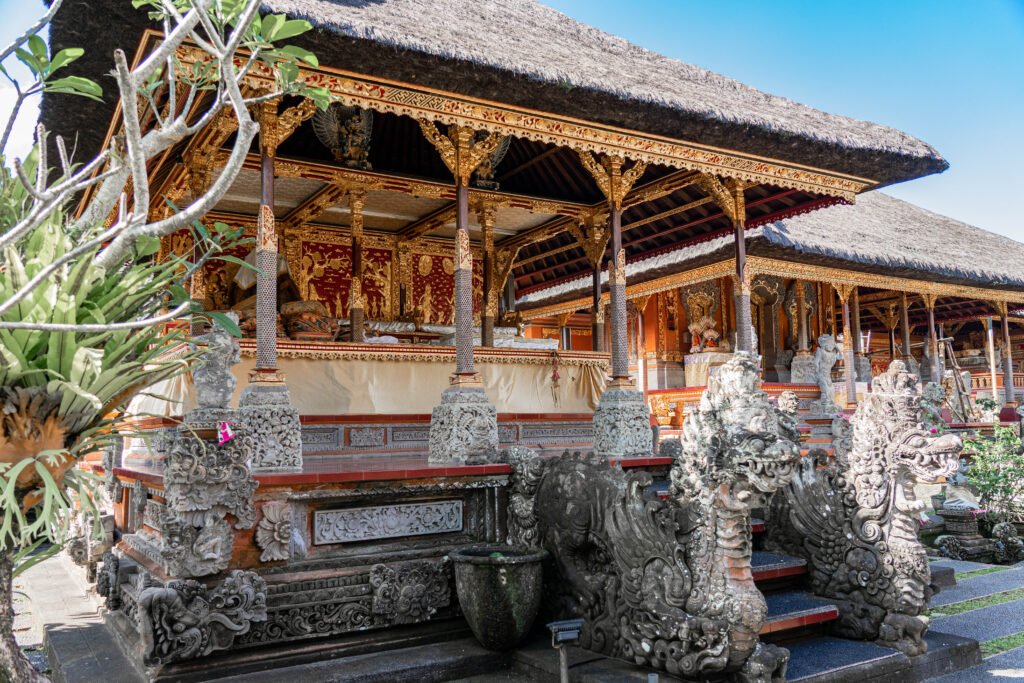
Bale Pengaruman
In addition, just like the ‘Bale Pesanekan’, at certain times, this bale is also used for several other activities, such as making and repairing ‘Barong’
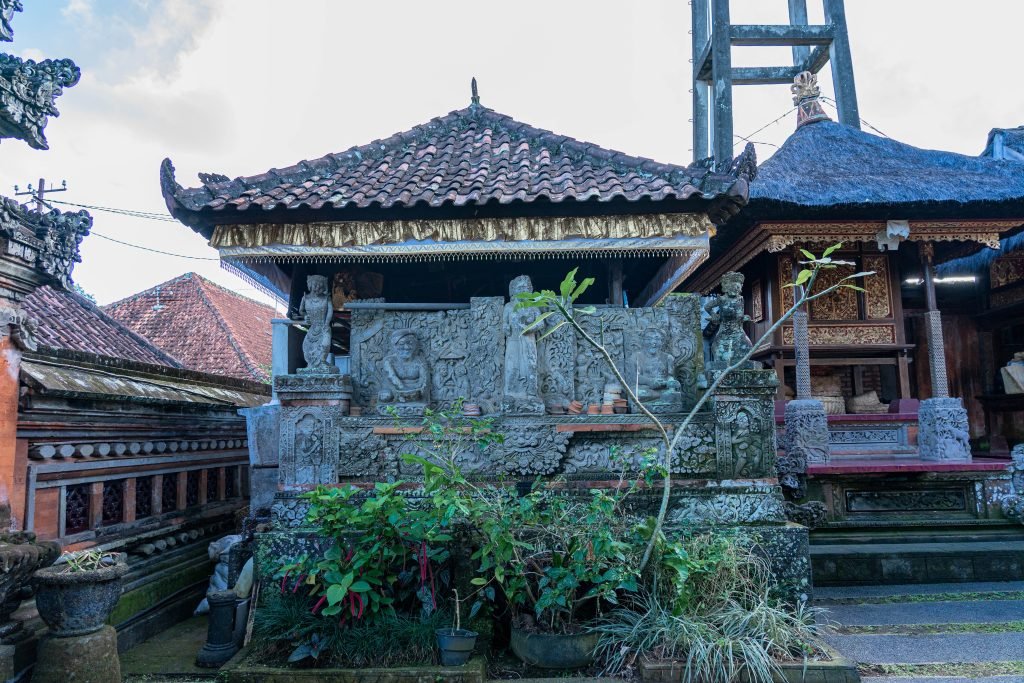
Bale Perantenan
This Bale is a traditional kitchen building that is intended for cooking or preparing all needs and needs, especially those related to preparing ceremonial
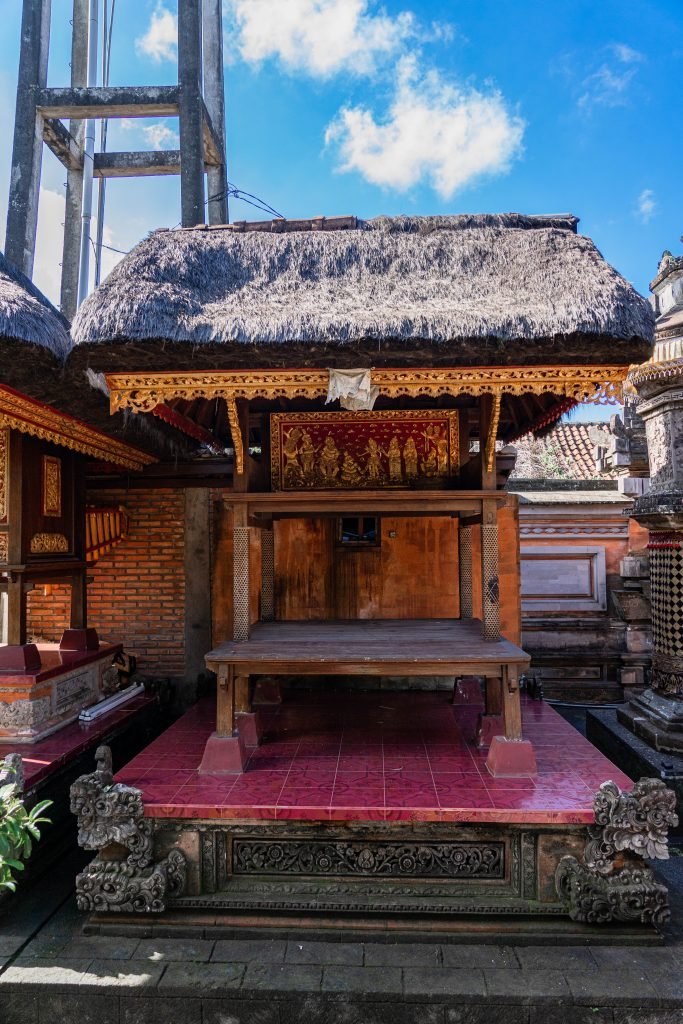
Bale Penegtegan
This Bale is called the ‘Bale Penegtegan (lumbung/Barn)’. ‘Bale Penegtegan’ is the Sthana for Bhatari Sri, the goddess of well-being or prosperity.
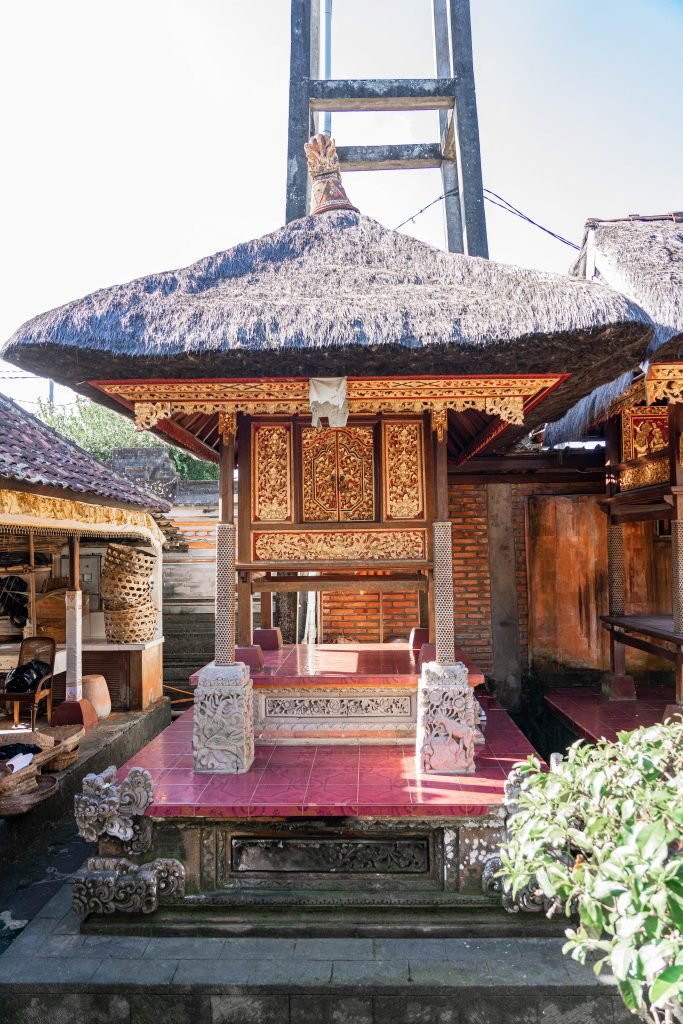
Bale Pengingkupan
Usually this ‘Bale Pengingkupan’ is also a Sthana or temporary residing place for all the gods who are invited during the big Piodalan ceremony.
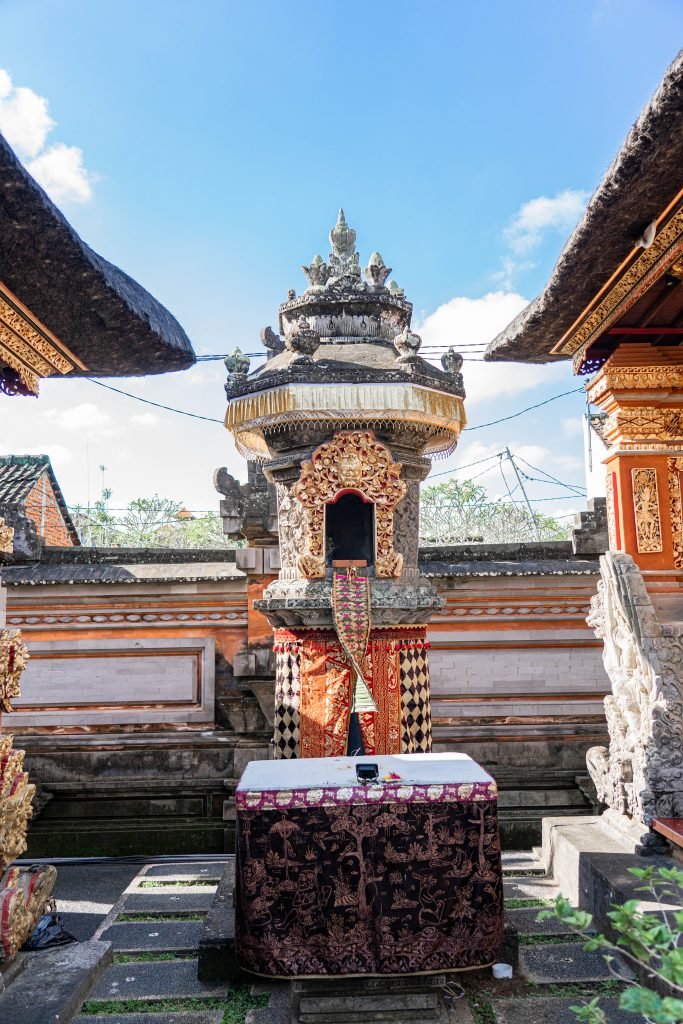
Sedahan Nglurah
Based on Rajendra Prasad, it can be seen that the two shrines on the right and left of the building/Bale Gedong are Sthana for figures who are entrusted with guarding the entire contents of the temple.
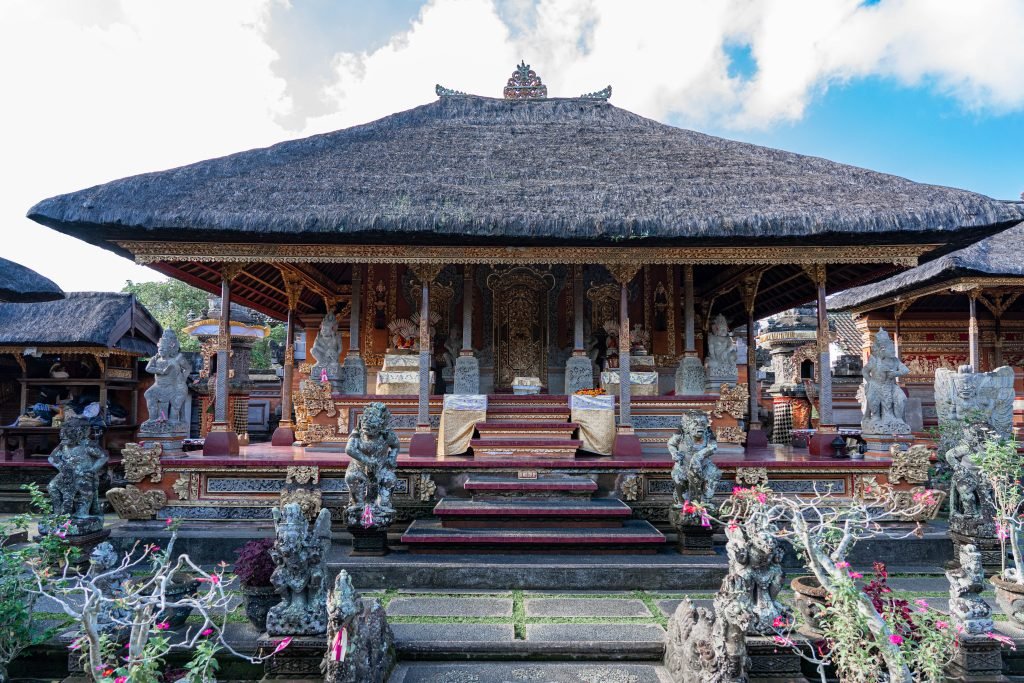
Bale Gedong
Bale Gedong’ is a building dedicated to Sthana for ancestors who have gone before the royal family of Ubud. Inside Pura Taman Kemuda Saraswati, ‘Bale Gedong’ is located in the middle and is on the north side.
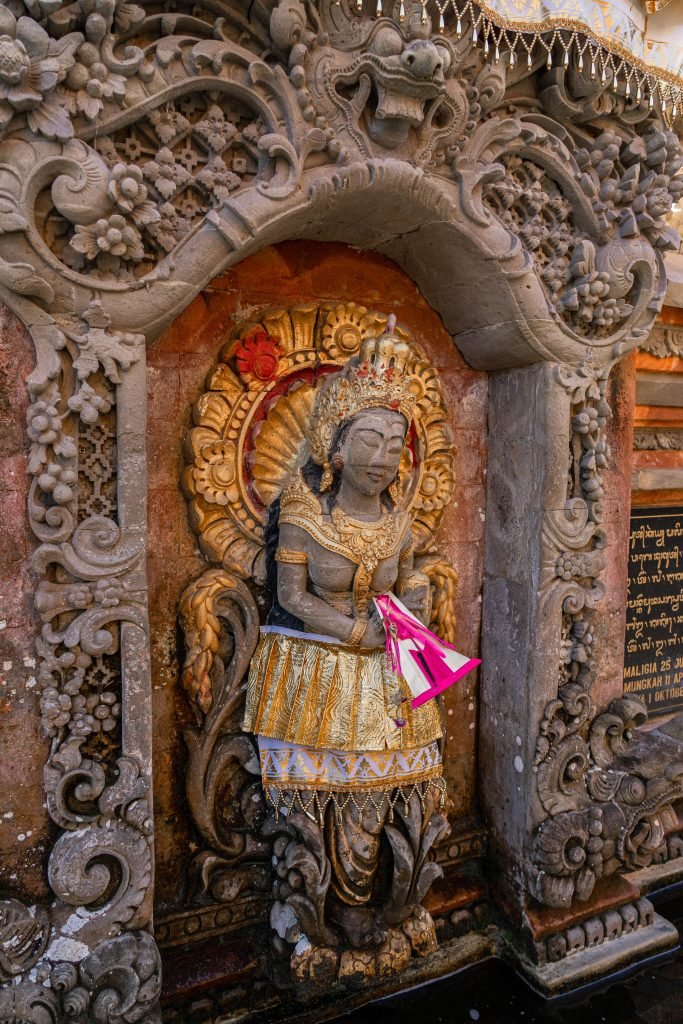
Aling-aling
This ‘Aling-Aling’ blocks the view to see the contents of the temple directly. The existence of the ‘Aling-Aling’ wall is believed to aim to divert evil spirits in Balinese architecture.
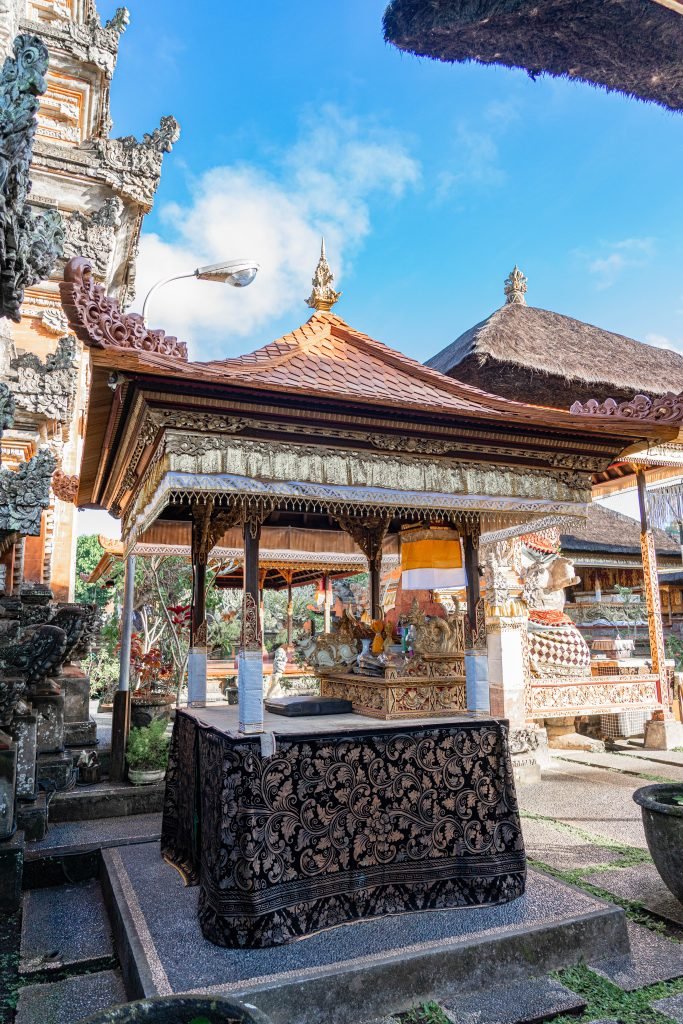
Bale Pemangku
At Pura Taman Kemuda Saraswati, there is a bale that is dedicated as a place for holy people (Pemangku) to preside over all religious ceremonies that are carried out.
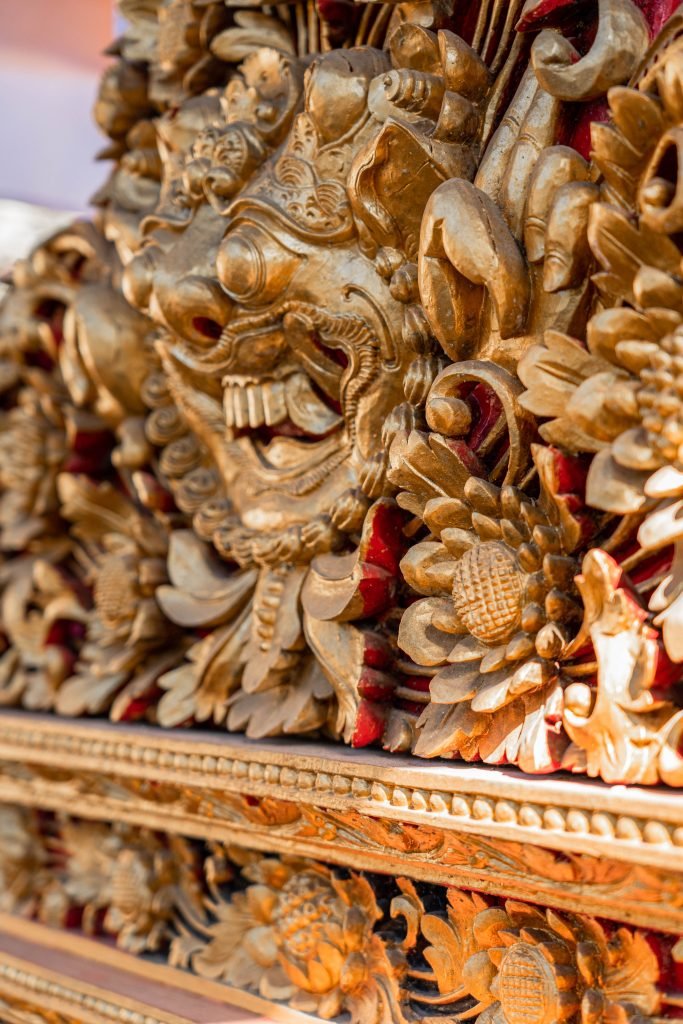
Bale Paselang
This Bale is located to the southeast of Pura Taman Kemuda Saraswati. As the name suggests, ‘Bale Paselang’ comes from the word ‘Selang’ which means ‘borrow’.
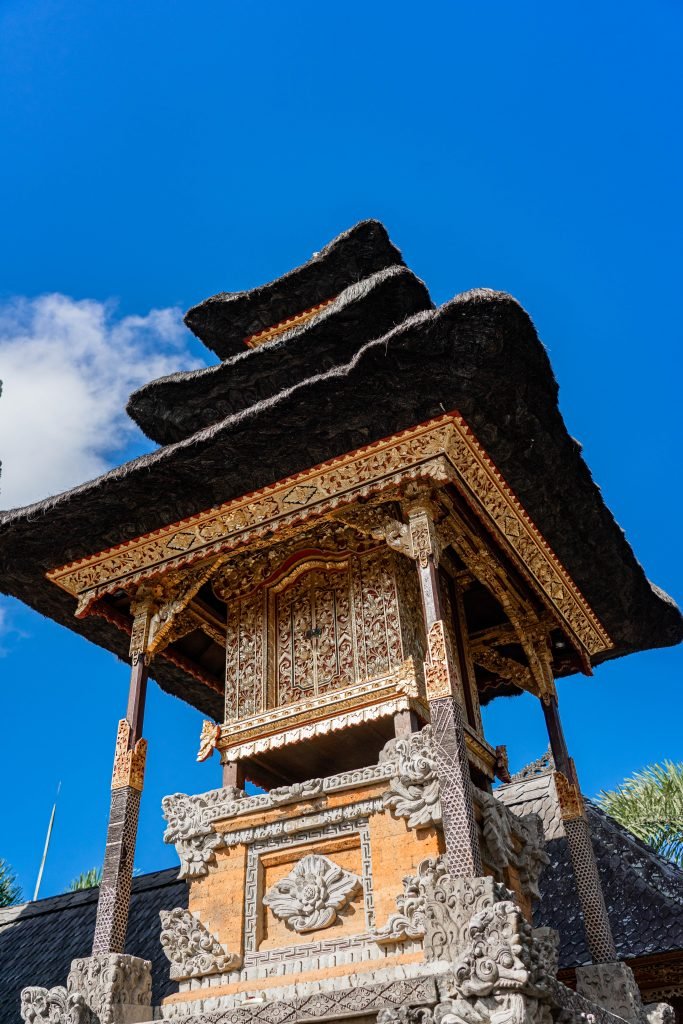
Meru Kembar
According to the mythology, ‘Meru’ is actually the name of a mountain in ‘Sorga Loka’. One of the peaks is called ‘Kailasa’, which is where Lord Shiva resides.
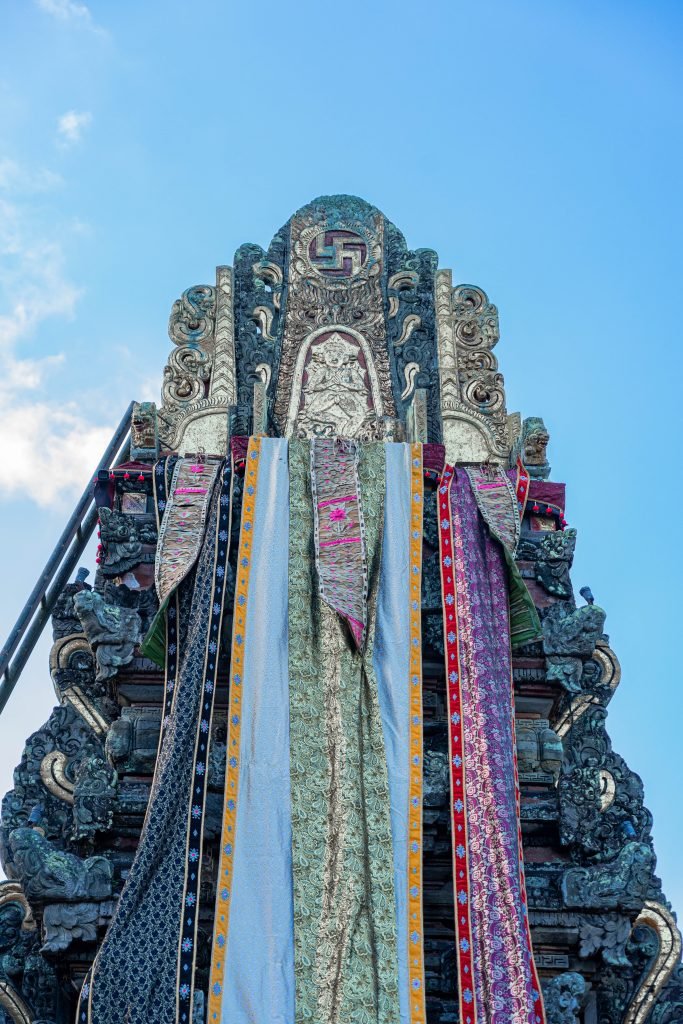
Padmasana
‘Padmasana’ is a sacred building to honor God Almighty (Ida Sanghyang Widhi) as a symbol and image of the macrocosm or universe (Bhuana Agung). Padmasana’s main function is as a place of worship of God Almighty.
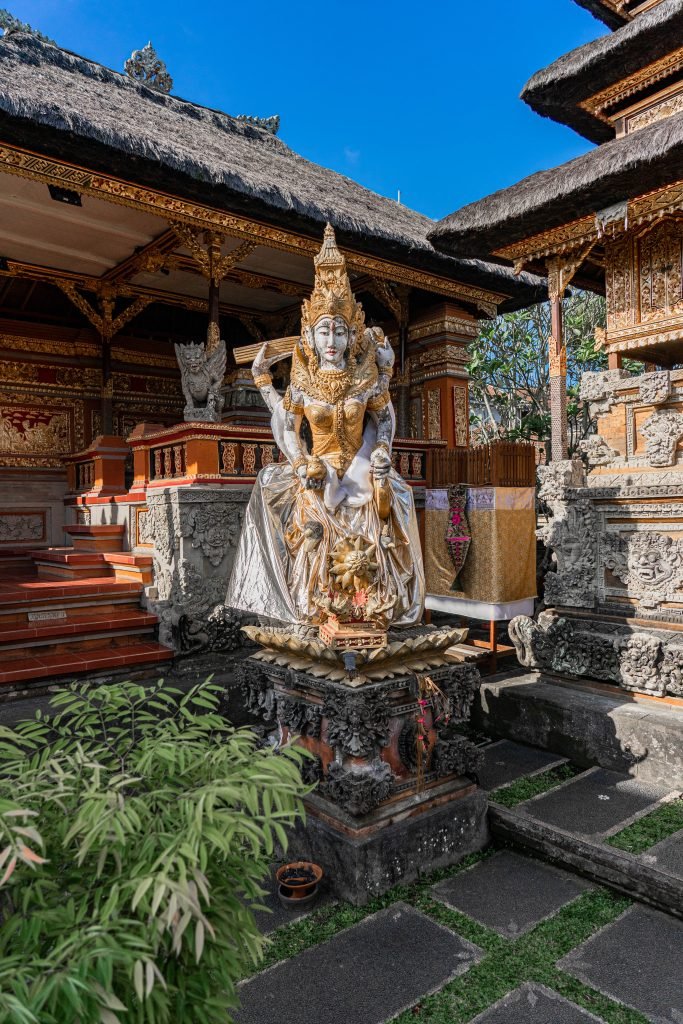
Patung Dewi Saraswati
In Hindu mythology or religious beliefs, Dewi Saraswati is described as having four arms which symbolize the four aspects of human personality in studying science.
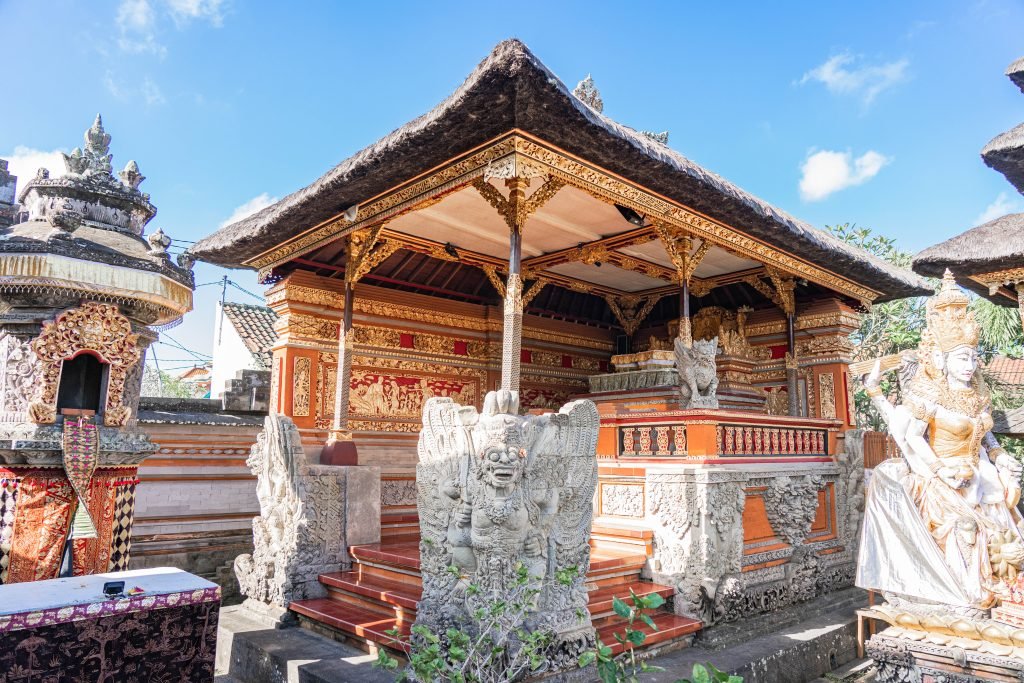
Bale Pesamuhan
This Bale is believed to be a place for meeting and gathering of the gods, bhatara-bhatari, as well as “Sang Hyang Tiga Pasupati”, namely ‘Parama Shiva’, ‘Sada Shiva’ and ‘Shiva’, when a Piodalan or religious ceremony is held.
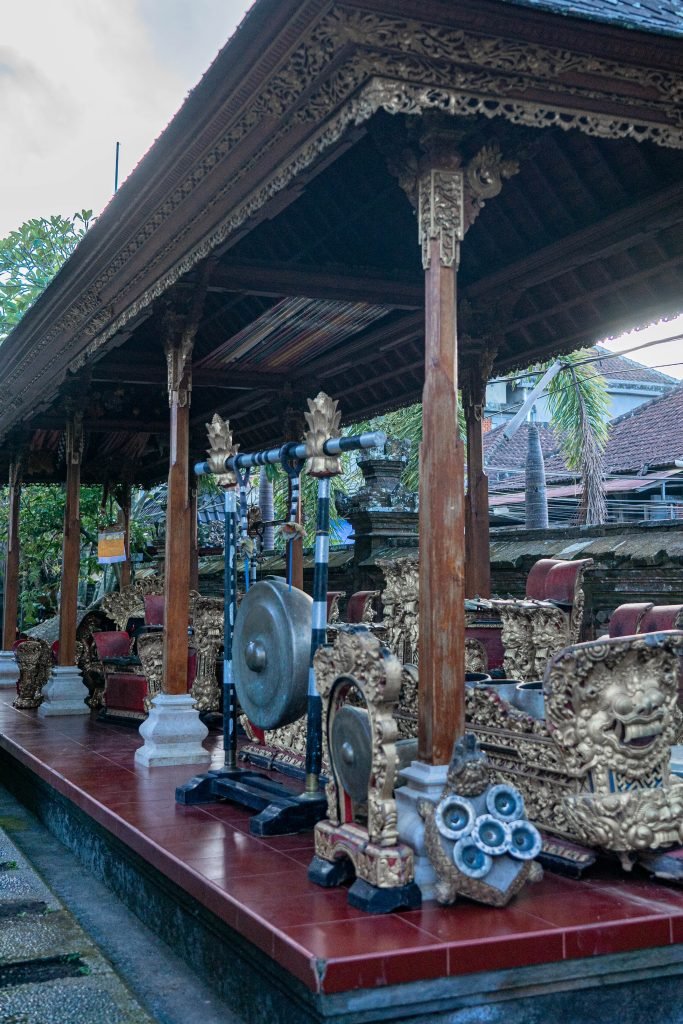
Bale Gong
This bale is a place devoted to placing and storing gamelan gong instruments, which are usually used during religious ceremonies or Piodalan at Pura Taman Kemuda Saraswati.

